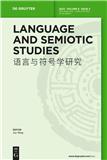
语言与符号学研究(英文)(Language and Semiotic Studies)(原:苏州大学学报(自然科学版))(不收版面费审稿费) 知网目次维普目次
- AMI入库
- 省级普刊
- 主管单位:
江苏省教育厅
- 主办单位:
苏州大学
- 国际刊号:
2096-031X
- 国内刊号:
32-1859/H
- 学科分类:
- 字数:
36000-68000
- 有无基金:
/有基金 100.0%
- 周期:
CN外文-季刊
- 特殊属性:
第二批认定学术期刊
- 电话:
0512-65126729(202202期)
- 邮箱:
lass@suda.edu.cnjunwang@suda.edu.cn
- 复合因子:
0
- 综合因子:
0
- 收录:
知网目次,维普目次
- 级别:
AMI入库,省级普刊
期刊简介
《语言与符号学研究》期刊已被查看: 次
更新频次
单位占比
一作占比
/有基金-100.0%投稿指南
1、投稿方式:在线投稿。
2、刊内网址:http://lass.suda.edu.cn/
官网网址:
https://www.degruyter.com/journal/key/lass/html
3、投稿系统:https://mc.manuscriptcentral.com/lass
4、出刊日期:季刊,一年出版4期。
5、咨询过编辑部不收版面费审稿费,欢迎大家投稿!
2024年5月8日星期三
Language and Semiotic Studies
(《语言与符号学研究》)投稿
【官方微信公众号信息】
从2022年第三期起,本刊将与国际学术出版社德古意特(De Gruyter)合作出版。现ScholarOne投审稿系统已开通,来稿请通过该系统提交,系统地址是https://mc.manuscriptcentral.com/lass。本刊诚邀国内外相关学科专家踊跃赐稿!
《语言与符号学研究 (英文)》杂志
Language and Semiotic Studies(《语言与符号学研究》)是中国国家新闻出版广电总局2014年12月批准设立、苏州大学主办的全英文学术期刊(ISSN: 2096—031X; CN:32—1859/H),该刊的办刊宗旨是:立足本土,关注国际语言与符号学的前沿与热点问题,积极介入国际学术交流,努力构建一个高水平和国际化的跨学科学术平台,大力推动我国与国际学术的高水平对接、交流与合作,服务中国学术走出去战略。2015年春季,首期开始出版发行。
本刊为季刊,每年定期面向国内外同行发表有关语言、文学、翻译、教育、文化、传媒及跨文化研究等方面内容的英语论文,常设栏目包括语言研究、文学研究、语言学理论及语言教学、符号学理论、应用符号学等。本刊将不定期围绕特定的热点问题组织和出版专辑。本刊热诚欢迎国内外学者通过该刊发表学术成果,并通过这一学术平台积极参与国际交流,所有立足语言学与符号学视角撰写的相关领域论文均可向其投稿。
《语言与符号学研究(英文版)》征稿【官网信息】
Language and Semiotic Studies
Guidelines for Contributors
Guidelines for Contributors
Language and Semiotic Studies has its focus on the latest in language and signs studies, and it publishes quality research in the studies of language, literature, translation, language education, communication and culture, etc. from linguistic or semiotic perspectives. From time to time, it will publish special issues devoted to topics of particular interest. We welcome contributions from colleagues all around the world.
Submission
LASS publishes in English. Manuscripts should be submitted at our manuscript submission and reviewing portal https://mc.manuscriptcentral.com/lass. All submissions should include:
- the text of the article
- an abstract
- keywords
- a cover page including each author’s name, institution, postal address, and a short bionote
Format
Length
Length of contributions is generally 8,000 words for Articles (Those not exceedingly long are also acceptable), and 1,000 words for Reviews.
Headings
1. First Level Heading
1.1 Second level heading
1.1.1 Third level heading
Capitalization
Capitalize major words in titles of books and articles and first level headings within the body of the paper. Conjunctions, articles, and short prepositions are not considered major words; however, capitalize all words of four letters or more. Capitalize all verbs (including linking verbs), nouns, adjectives, adverbs, and pronouns. When a capitalized word is a hyphenated compound, capitalize both words. Also, capitalize the first word after a colon or a dash in a title. For example:
In her book, History of Pathology
In the article “Ultrasonic Vocalizations Are Elicited From Rat Pups”
“Memory in Hearing-Impaired Children: Implications for Vocabulary Development”
Notes
All notes should be endnotes.
Citations and references
The journal requires the use of American Psychological Association (APA) style for citing references in papers.
Citation
When quoting fewer than 40 words, incorporate the quotation into text and enclose the quotation with double quotation marks. If the quotation comprises 40 or more words, display it in a freestanding block of text and omit the quotation marks. For example:
Interpreting these results, Robbins et al. (2003) suggested that the “therapists in dropout cases may have inadvertently validated parental negativity about the adolescent without adequately responding to the adolescent is needs or concerns” (p. 541), contributing to an overall climate of negativity.
Confusing this issue is the overlapping nature of roles in palliative care, whereby “medical needs are met by those in the medical disciplines; nonmedical needs may be addressed by anyone on the team” (Csikai & Chaitin, 2006, p. 112).
Others have contradicted this view:
Co-presence does not ensure intimate interaction among all group members. Consider large-scale social gatherings in which hundreds or thousands of people gather in a location to perform a ritual or celebrate an event.
In these instances, participants are able to see the visible manifestation of the group, the physical gathering, yet their ability to make direct intimate connections with those around them is limited by the sheer magnitude of the assembly. (Purcell, 1997, pp. 111-112)
References
- Arrange reference list entries in alphabetical order by the surname of the first author or by title if there is no author.
- Use only the initial(s) of the author’s given name, not the full name.
- If the reference list includes two or more entries by the same author(s), list them in chronological order (oldest first).
- Capitalize only the first letter of the first word in the article, report, and book title and subtitle.
- Capitalize proper names. Capitalize all significant words of a journal title.
- Italicize journal titles and volume numbers. Do not italicize issue numbers. Italicize book and report titles.
- References cited in text must appear in the reference list and vice versa.
For more detailed information please refer to the published articles in the journal and Publication Manual of the American Psychological Association (6th ed.), (BF 76.7 .P83 2009) and to the APA Style website at www.apastyle.org.
All rights reserved. Any article published in this journal is protected by copyright, which covers the exclusive rights to reproduce and distribute the article (e.g. as offprints), as well as all translation rights. No material published in this journal may be reproduced in any form or by any means, electronic or mechanical, including photocopying, recording or any information storage and retrieval now known or to be invented, without first obtaining written permission from the copyright holder.
《语言与符号学研究》同类语言文字期刊
-
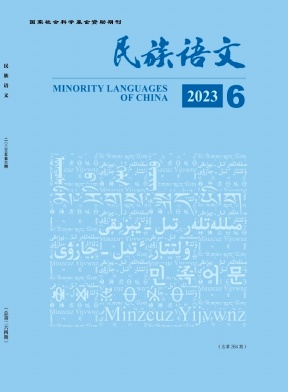
民族语文(不收版面费审稿费)
C刊,北核,AMI核心,武B+
CN中文-双月刊影响因子0.636
-
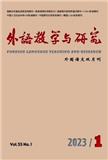
外语教学与研究(不收版面费)
AMI权威,C刊,北核,科核,武A+,国社科-合格
CN中文-双月刊影响因子2.145
-
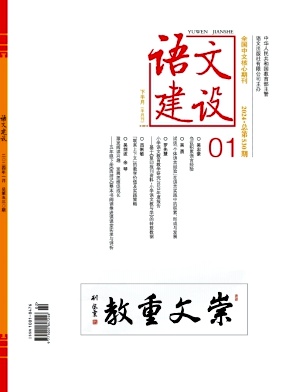
语文建设(不收版面费审稿费)
北核,AMI扩
CN中文-半月刊影响因子1.274
-
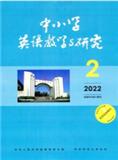
中小学英语教学与研究(不收版面费审稿费)
北核
CN中文-月刊影响因子0
-
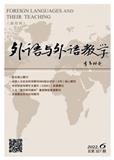
外语与外语教学(不收版面费审稿费)
C刊,北核,科核,AMI核心,武A
CN中文-双月刊影响因子2.483
-
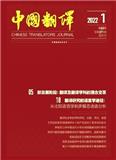
中国翻译(不收版面费审稿费)
C刊,北核,科核,AMI核心,武A
CN中文-双月刊影响因子3.156
-
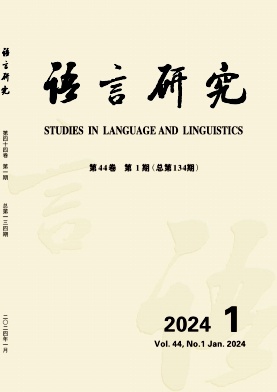
语言研究(不收版面费审稿费)
C刊,北核,科核,AMI扩,武B+
CN中文-季刊影响因子0.576
-
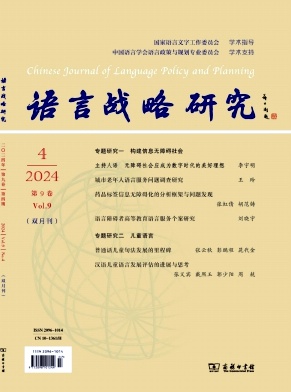
语言战略研究(不收版面费审稿费)
C刊,北核,武A,AMI扩
CN中文-双月刊影响因子2.785
常见问题
-
语言与符号学研究杂志社官网、联系方式是什么?
语言与符号学研究杂志社官网:http://lass.suda.edu.cn/
投稿网址:https://mc.manuscriptcentral.com/lass联系电话:0512-65126729(202202期)
投稿邮箱:lass@suda.edu.cnjunwang@suda.edu.cn -
语言与符号学研究杂志是核心期刊么?
语言与符号学研究是核心期刊,级别是:AMI入库,省级普刊, 是:语言文字分类下的知网目次,维普目次收录的期刊。
-
请问你们是语言与符号学研究杂志社吗?
我们不是《语言与符号学研究》杂志社。本站主要从事期刊信息展示与期刊推荐,不是任何杂志官网,直投稿件请联系杂志社。本站仅提供免费的学术指导、论文辅导、期刊投稿信息整理收集服务。
-
你们指导服务后可以保证文章被发表吗?
期刊发表的成功与否,主要取决于文章内容的质量。编辑老师会根据研究领域、创新性等多因素进行考量。我们会帮助您理解期刊的发表要求,助力提升发表几率,从而增加发表的机会。
-
晋级论文能否在报纸上发表?
在学术界,论文的发表往往被视为研究者职业发展的重要一环。晋级论文,即为了获得更高职称或学术地位而撰写的学术论文,通常需在专业期刊上发表。然而,许多人可能会问
